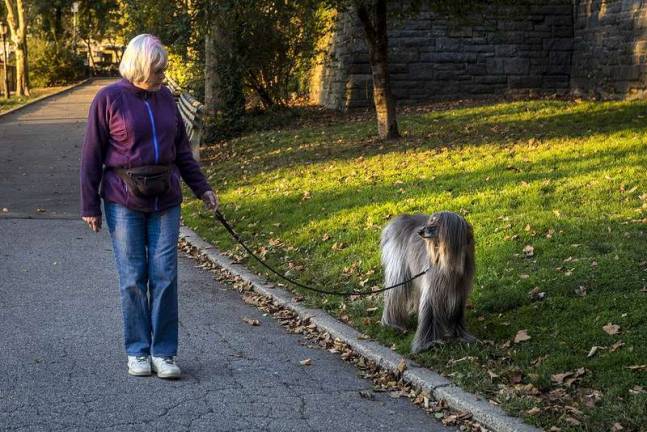managing your weight as you age

BY RESHMI SRINATH, M.D.
It’s time to face this simple but annoying fact: as we age our metabolism slows down. By our 30th birthday, it’s already started to decline. For seniors in the city, where eating out or cooking for family provides fun and social time, losing weight can be particularly challenging, but excess weight can be unhealthy.
As we gain weight the risk of chronic illnesses such as diabetes, heart disease, high blood pressure, high cholesterol, sleep apnea and certain cancers increases. Age-related aches and pains, genetics, use of certain chronic medications associated with weight gain and 24 hour/day food delivery services makes it easy to see why half of all New Yorkers are either overweight or obese and are struggling to take off the pounds. But it can be done by incorporating some simple strategies below. I’ve helped my older patients lose weight and keep it off by prioritizing a healthy diet and lifestyle.
Here are some strategies for weight-loss success:
• To get started, pay attention to portions, portions and portions! Check out this helpful plate planner, also known as the plate method. https://www1.nyc.gov/assets/doh/downloads/pdf/csi/obesity-plate-planner-13.pdf. Quantity-wise, a fist is a serving of rice or pasta and a palm or deck of cards is a serving of protein. You can use measuring cups as well to get the right serving size.
• Try to get at least one cup of non-starchy vegetables at lunch and dinner. These might include lettuce, tomato, cucumbers, carrots, onions, peppers, broccoli, spinach, kale, zucchini, okra, collard greens, cabbage, artichoke, asparagus and eggplant.
• Try to limit yourself to one-half to one cup of carbohydrate/starch with your meal. Healthy options include quinoa, lentils, whole wheat pasta, whole wheat bread, brown rice, sweet potato. Try to avoid white bread, white rice, white potatoes.
• If you like to snack on fruit, try and pair the fruit with a protein such as cheese, nut butters, eggs or nuts to help keep you fuller longer.
• Limit alcohol, juice and soda. They are empty calories and can even cause you to eat more later. If you feel you need it, then dilute it with water or try flavored sparkling water.
• Look at your choice of snacks. Clean out your pantry of all unhealthy snacks and junk food. You can always keep a separately labeled box for the grandchildren where you keep their snacks if you need to have some on hand. When they leave you can give it away to your neighbors or put it away for their next visit.
• Try to eat something every four to six hours. Sometimes we forget to eat because we are caught up in something else. Even something small which has a balance of protein and carbohydrates will keep you full and reduce cravings later.
• If eating is a way of coping with stress, try instead to start with a cup of hot tea or chewing gum, or try to divert yourself by calling a friend, watching TV or going for a walk.
Increasing activity is also key, but this doesn’t always mean you need to do high impact exercise like running or jumping. Exercise can even take place in your favorite chair. Remember that any activity you do is going to help raise your metabolism, burn calories and increase endorphins, which will elevate your mood and reduce joint pain and stiffness. Weight-bearing exercise also helps promote bone strength and can reduce the risk of fractures. And it doesn’t have to be time-consuming. You can do 30 minutes over the course of the day, even in five minute bursts.
To get started:
• Try sitting in a chair, lifting your feet off the ground one at a time and kicking your legs straight out. Arm movements can be incorporated by lifting your arms to the sides, in front and moving your arms in circles. While seated, try these same arm exercises with two- to five-pound dumbbells or try using a resistance band, anchoring it under your feet and raising your arms.
• Try stretching your legs and arms while lying in bed. Using the sheets can also provide resistance.
• Swimming is great exercise for seniors and can help with muscle tone and mobility, so see if you can find a local Y that has swim classes.
• Walking with groceries can also burn calories, but be careful and go at a comfortable pace. Keep an eye out for any uneven ground or slippery surfaces.
• Don’t ignore the aches in your knee, back, shoulders or other joints. If you feel uncomfortable, consult with your primary physician to see if physical therapy can help.
• Don’t go it alone. It’s hard to lose weight in isolation with no support. Recruit a friend, neighbor, family member or the grandkids to help you stay active.
And as always, make sure you speak with your doctor and make them aware of your desire to lose weight. Be sure to get your new workout routines cleared by them, as well as any changes you may make in your diet.
If you need professional help, get it. You’ve taken care of your family — now it’s time to prioritize your own health, and you deserve it.
If you feel like even with diet and lifestyle changes that you are still struggling to lose weight, consider seeing a specialist for weight loss.
Dr. Reshmi Srinath is an Assistant Professor in the Department of Medicine, The Division of Endocrinology, Icahn School of Medicine at Mount Sinai and Director of the Mount Sinai Weight and Metabolism Management Program.